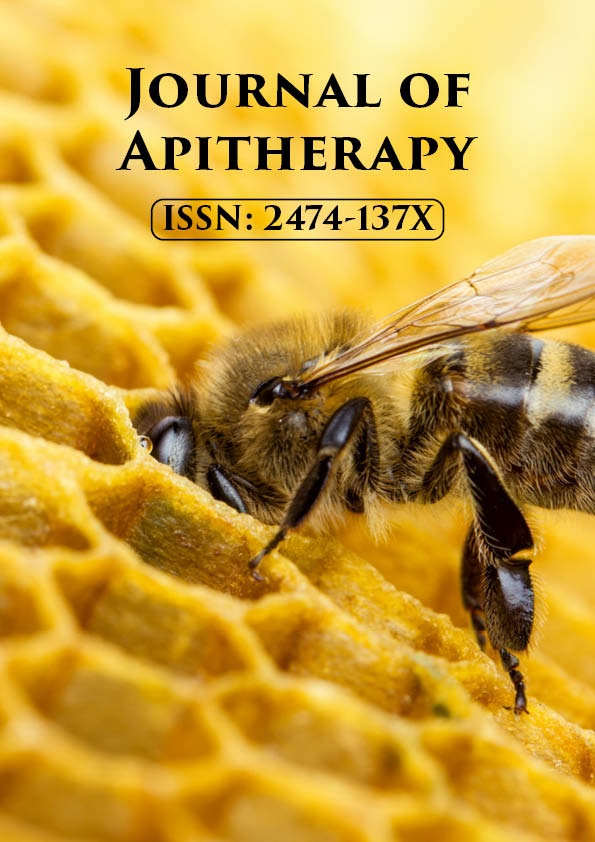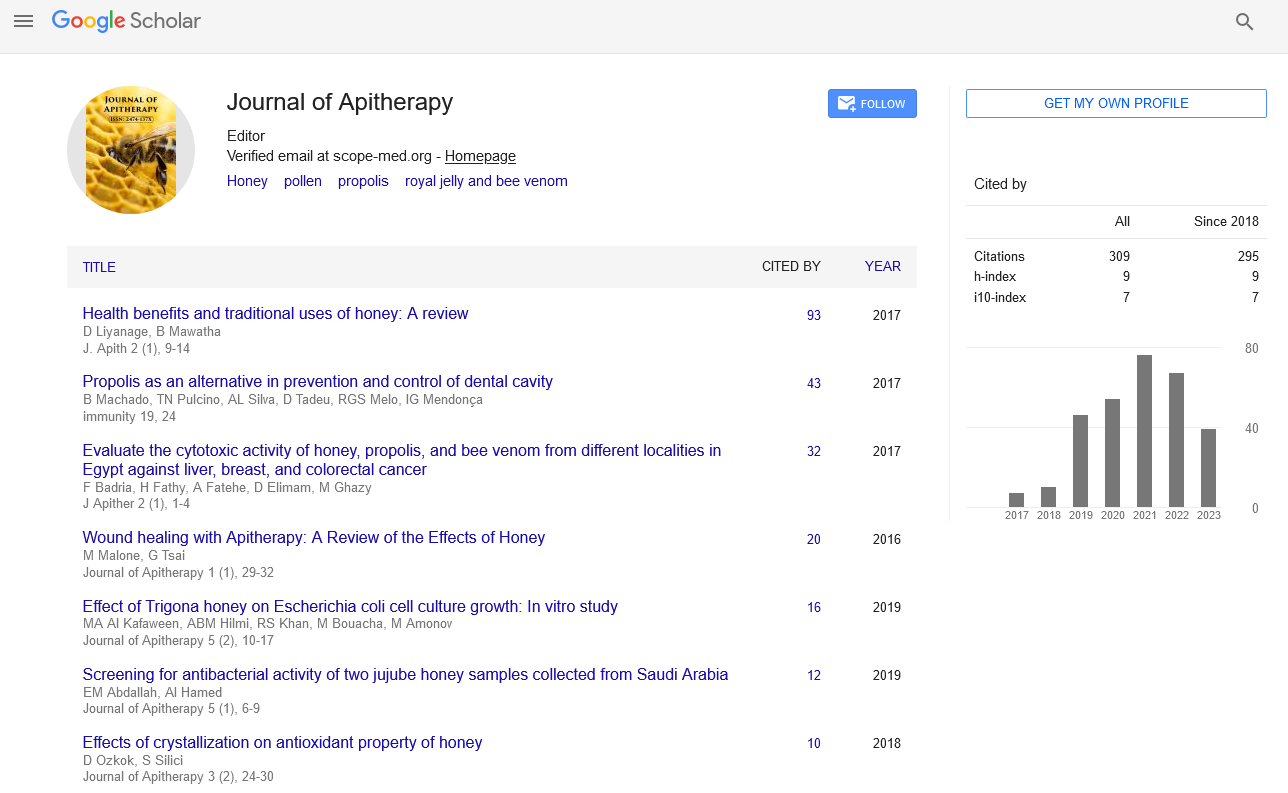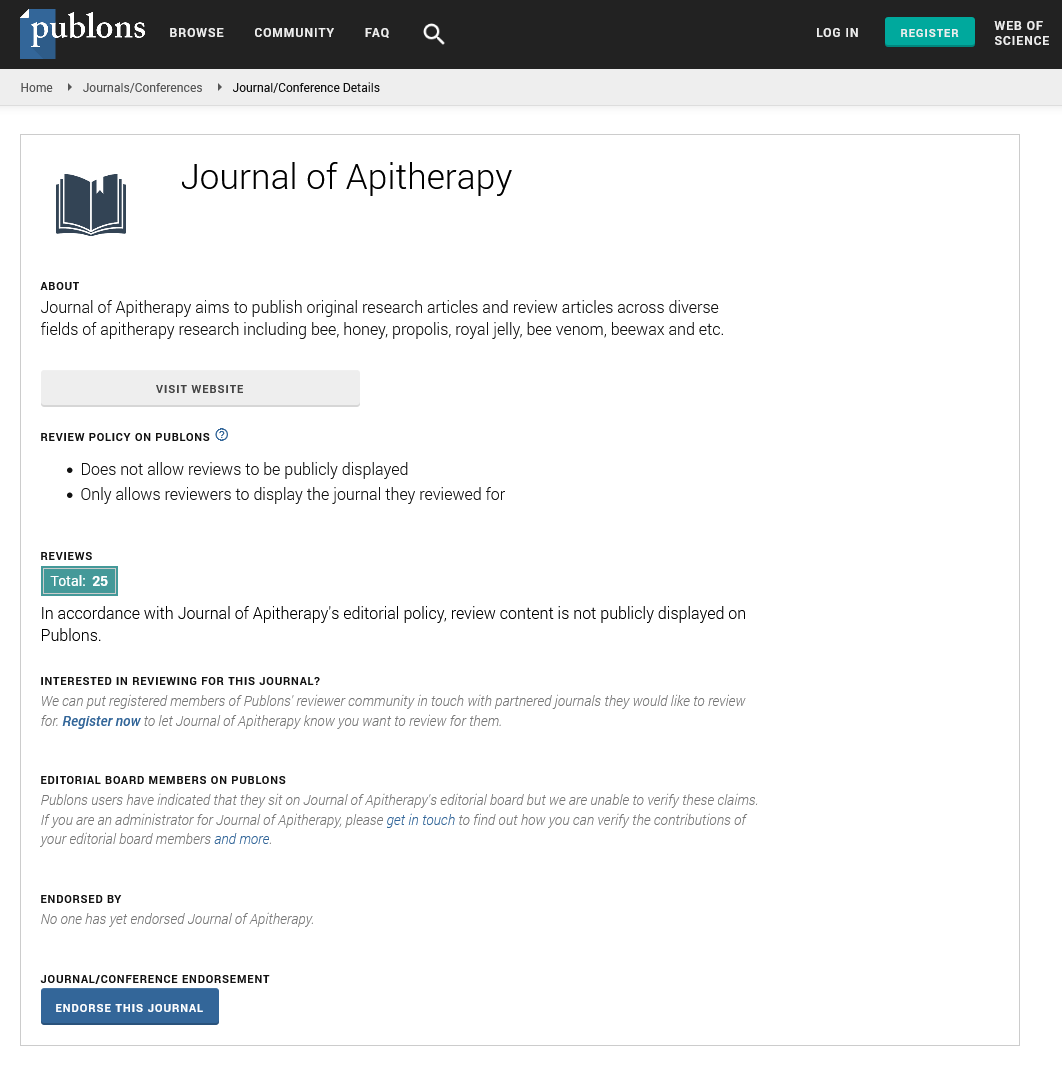Opinion - Journal of Apitherapy (2022)
Importance of Honey in Wound Healing
Tong Yenn*Tong Yenn, Department of Pharmacy, King Saud University, Riyadh, Saudi Arabia, Email: wyteng@unial.edu.my
Received: 04-Feb-2022, Manuscript No. JAPITHERPAY-22-56875;; Editor assigned: 07-Feb-2022, Pre QC No. JAPITHERPAY-22-56875 (PQ);; Reviewed: 22-Feb-2022, QC No. JAPITHERPAY-22-56875; Revised: 28-Feb-2022, Manuscript No. JAPITHERPAY-22-56875 (R).; Published: 07-Mar-2022
Description
Honey is one of the most popular functional foods, with evidence of its use dating back to the dawn of civilization. Honey is used in Unani medicine to treat a variety of ailments, including wound healing, anti-inflammatory, and anti-diabetic. Honey is a supersaturated solution made by bees that is mostly made up of fructose and glucose, but also contains proteins, amino acids, vitamins, enzymes, minerals, and other minor components. Honey skin usage may be traced back to the dawn of civilization, demonstrating that honey has long been used as a binder or carrier, as well as for its therapeutic properties. By the second intention, the wound had entirely healed, with regeneration of hair and minimal scarring. In the injured leg, full function was restored. This is the first recorded account to the authors’ knowledge of such large total skin loss on a limb in a cat cured by second intention with the application of medical honey. The epidermal skin barrier defends the body from a variety of daily difficulties, including mechanical assaults and chemical and xenobiotic absorption. The epidermis provides a physical barrier as well as an intrinsic defence against microbial invasion. This is accomplished through the presence of a diverse collection of microorganisms on the skin, known as the “microbiota,” which maintain a delicate balance with the host and play an important role in human health. When the skin is injured, local tissue with a weakened barrier can become colonized and infected if bacterial growth outpaces the host’s response. Wound infections cause a significant increase in healthcare expenses and a reduction in patient quality of life, and treatment is becoming increasingly critical due to the infection’s unfavorable impact on wound healing. Honey has been used to treat wounds since ancient times because of its antibacterial and wound-healing properties. Honey, a carbohydrate- rich natural component, could be used in clinical settings or integrated into tissue-engineered platforms. The antibiotic’s clinical utility was severely harmed as a result of its research. However, due to the rise in antibiotic resistance, there has been a greater demand for alternate therapeutic methods. Honey is a naturally occurring sweetener that has traditionally been used to treat wounds due to its unique physicochemical qualities. The goal of this research was to see if nanocellulose might be used as an antibacterial drug delivery system in the creation of wound dressings. Initially, cellulose nanocrystals were made from medical-grade cotton using acid-base hydrolysis and sonication, then characterized using a transmission electron microscope. Using polyvinylpyrrolidone as a binder, a honey-coated nanocellulose film was created. The Nano cellulose film containing honey was homogeneous, slightly opaque, and yellowish in color. Honey emerging from the film was designed to follow first-order kinetics, a process of consistent drug release from the drug delivery system, according to a kinetics research. Adulteration of honey results in significant financial losses for the sector, and it is difficult to detect different types of syrup adulteration. There is no doubt that honey adulteration research is important for maintaining market order in honey and syrup, as well as defending customers’ lawful rights and interests. A hyperspectral imaging equipment was used to obtain hyperspectral images of pure and contaminated materials. Honey powder is becoming more popular in the culinary, cosmetics, and pharmaceutical industries because it eliminates the drawbacks of raw honey, such as viscosity, stickiness, and sugar crystal formation.
Copyright: © 2022 The Authors. This is an open access article under the terms of the Creative Commons Attribution NonCommercial ShareAlike 4.0 (https://creativecommons.org/licenses/by-nc-sa/4.0/). This is an open access article distributed under the terms of the Creative Commons Attribution License, which permits unrestricted use, distribution, and reproduction in any medium, provided the original work is properly cited.







